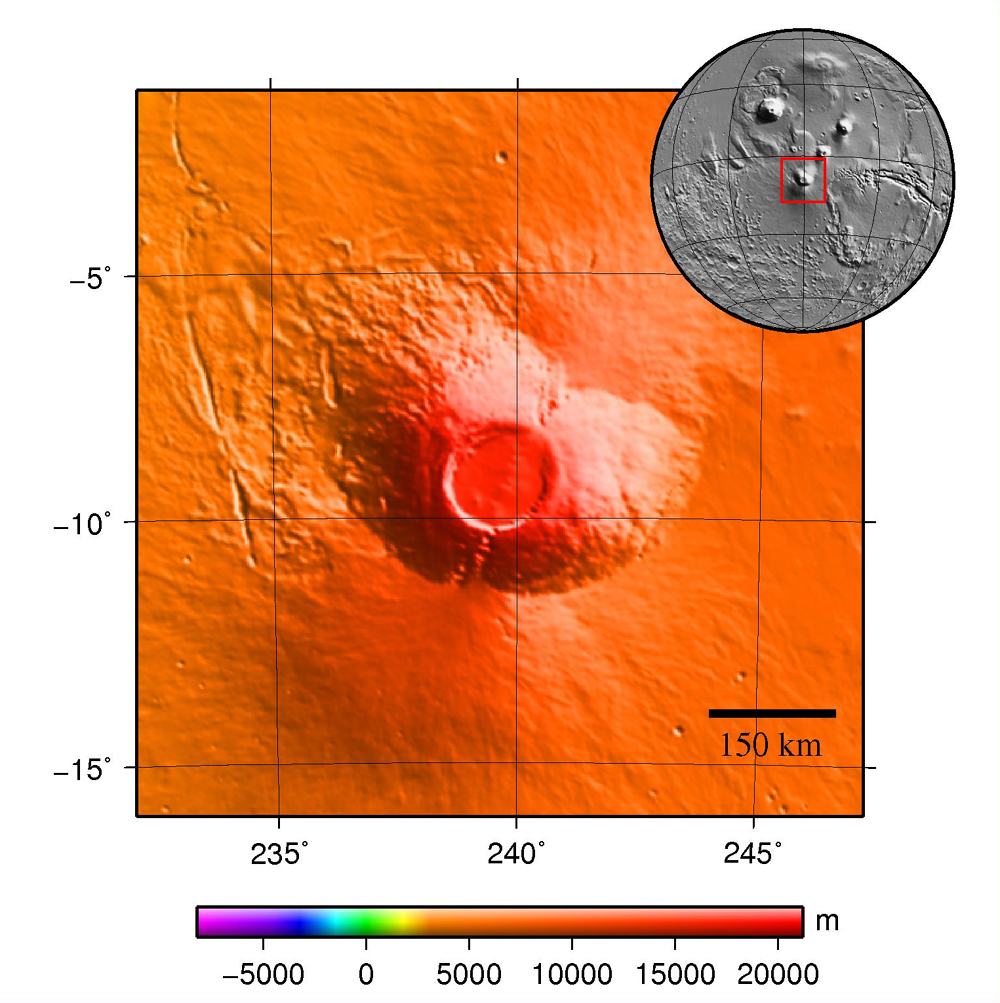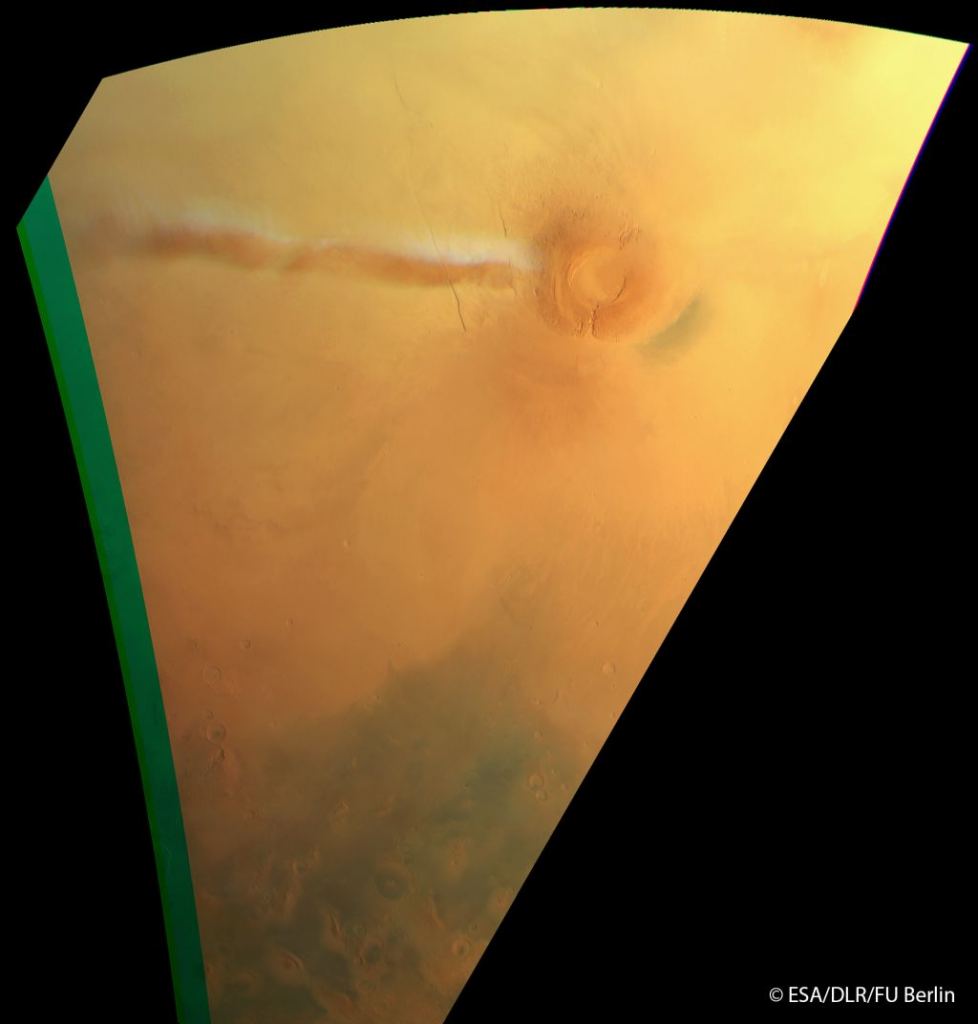The ESA’s Mars Express orbiter has spotted a funny cloud on Mars, right near the Arsia Mons Volcano. At first glance it looks like a plume coming out of the volcano. But it’s formation is not related to any internal activity in this long-dead volcano. It’s a cloud of water ice known as an orographic or lee cloud.
The cloud isn’t linked to any volcanic activity, but its formation is associated with the form and altitude of Arsia Mons. Arsia Mons is a dormant volcano, with scientists putting its last eruptive activity at 10 mya. This isn’t the first time this type of cloud has been seen hovering around Arsia Mons.

The lee cloud at Arsia Mons is more than a funny cloud on Mars. It’s a distinct meteorological feature that regularly occurs on Earth as well. They’re caused by standing atmospheric waves. As stratified air is forced to move to a higher elevation by a landform, typically a mountain, the air cools and the condensation forms clouds. Whereas other cloud types can form and then move across the sky, a lee cloud is tied to the landscape feature that formed it.
The Express Orbiter has been watching the cloud form since September 13th. The orbiter captured hundreds of images of this funny cloud on Mars as it grew to a length of 1500 kms.

This water ice cloud, which arises as the volcano slope interacts with the air flow, can be seen as the long white feature extending to the lower right of the volcano. The cloud, which measures 915 km in this view, also casts a shadow on the surface. This image was taken on 21 September 2018 from an altitude of about 6930 km. North is up. Image Credit: ESA/DLR/FU Berlin http://www.esa.int/spaceinimages/ESA_Multimedia/Copyright_Notice_Images
These types of clouds are also related to dust storms on Mars. After a dust storm, the atmosphere is full of solid particles called condensation nuclei. These tiny dust grains provide a solid surface for the water ice to condense onto. The major, planet-wide dust storm that engulfed Mars last June and July provided perfect conditions for a cloud of this size to form.
As on Earth, the seasons play a role in cloud activity. October 16th is the solstice in the northern hemisphere. The summit of Arsia Mons is typically covered in clouds throughout the rest of the year, but leading up to the solstice, most of the large volcanoes lose their cloud cover. This cloud is the exception though. This seasonally recurrent ice cloud has a history of forming along the southwest flank of Arsia Mons. Mars Express and other orbiters have also spotted it in 2009, 2012 and 2015.
The size of this standing wave cloud changes throughout the Martian day. As morning progresses, the cloud grows longer, parallel with the equator. At 1500 kms. in length, it is visible to telescopes on Earth.
The Visual Monitoring Camera on-board ESA’s Mars Express Orbiter is keeping a watchful eye on the cloud. You can watch what it sees at the Mars Webcam page on Flickr.

